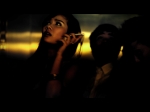This is an article by our colourist Alexis Odiowei explaining the science behind colour grading and monitors.
 “I want it to the look the same on every screen it is viewed on.”
“I want it to the look the same on every screen it is viewed on.”
This is the impossible task that colourists the world over often find themselves confronted with by agencies, clients and directors.
Over the course of this blog I will detail in simple terms why this is ultimately unachievable.
The best place to start is to give a brief summary of the science and technology that dictates the way that we view color on different monitors. Various video cameras shoot in different color spaces that can be utilized for different reason at the various stages of post production but the current colour space or standard for television broadcasting is known as REC709. Every TV Broadcast colourist will be working with a broadcast monitor that is calibrated to REC709. Most consumer HDTVs are also roughly calibrated to this standard.
So why does it look different on my TV at home?
The most simple way of explaining this is to use a real life example that almost everyone will have experienced. If you have ever been into an electronics store and seen 3 or 4 televisions lined up next to each other all playing the same image you will have noticed that they all display the colour differently, some differences are very subtle while others may be more extreme.
One of the main problems is that most new HDTVs offer a multitude of settings ranging from dynamic through to sport and so on that enable the consumer to modify the picture they see on their television. Quite often televisions ship with one of these settings applied this can greatly distort the way that we see the image from grade to broadcast. This often results in an image that is drastically different from the work done in the colour grading suite.
Many people in the industry feel so strongly about the way that images are distorted through these TV settings that there are various petitions to ensure that TVs are shipped with standard settings. You can see a few articles on the subject below.
http://www.bbc.co.uk/news/technology-19650769
This picture was a recent internet phenomenon with many people seeing the dress as white and gold while others saw it as blue and black. This again shows how lighting situations brightness and different screens vastly effect the way cololur is perceived.
Ok well what about my laptop home computer?
Clients often ask colourists to send on a file that they can review and give changes on. This is every colourists worst nightmare as 90% of laptop and computer screens are not calibrated to any standard. On top of this if you are using your laptop for work purposes (word, excel etc) chances are you have adjusted the brightness settings to your liking. So often feedback in this way can be at best pointless and at worst damaging.
I can think of a recent example where I spent over a week going back and forth with a director making changes based on his laptop image, only for him to finally come in and approve the original grade that I had done at the beginning of the week.
So whats the point in color grading at all?
The thing about colour is that there are various things that affect the way we perceive it, whether it be lighting, back drop or adaptation (your eyes adjusting to an image after viewing it too long). We color grade to ensure that at it’s best the image is seen as closely as possible to how it was in the grading suite, however if it is not observed in this environment we are still greeted with an image that has an overall complementary colour pallet and doesn’t for instance become too dark in the black levels or have clashing colours.
Overall the small differences between televisions set at a REC709 standard will have very little impact on the viewers experience providing the colorist has carried out their duties properly.
So to conclude the key is not to worry about whether it’s going to look exactly the same on every screen. It’s not going to! The main thing to take into account is the medium your project is destined for and employing a colourist that can ensure that the image is going to look good in this medium regardless of the subtle changes between the various screens it will be viewed on.
ARTICLE BY ALEXIS ODIOWEI







































